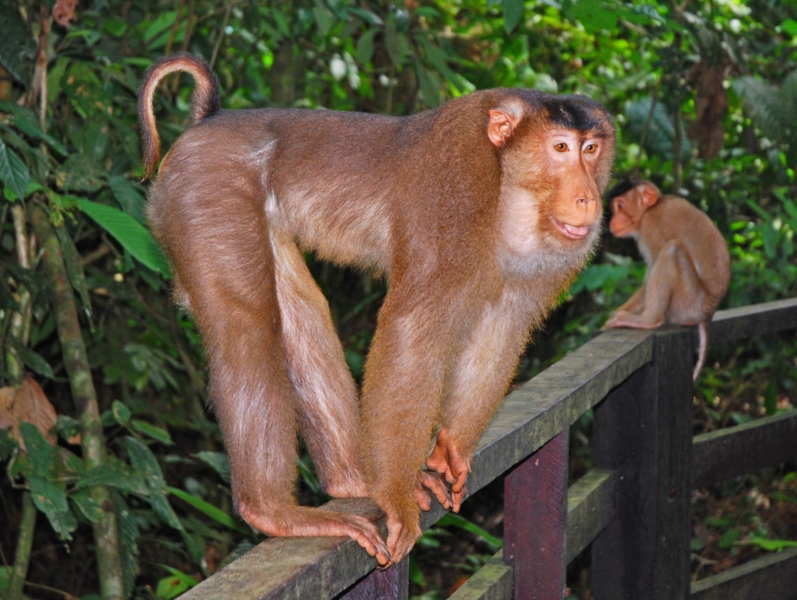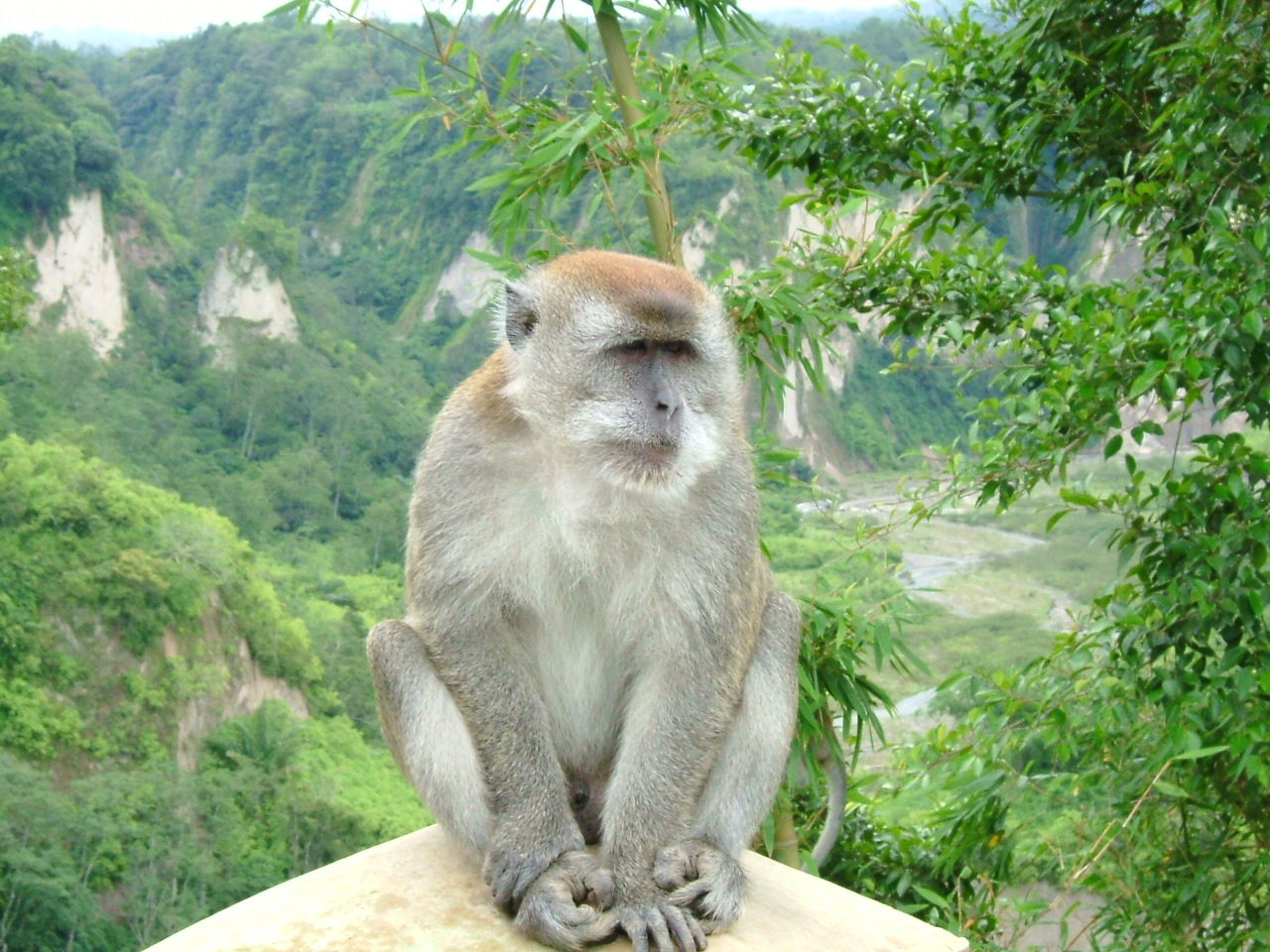|
Simian Retrovirus
''Mason-Pfizer monkey virus (M-PMV)'', formerly Simian retrovirus (SRV), is a species of retroviruses that usually infect and cause a fatal immune deficiency in Asian macaques. The ssRNA virus appears sporadically in mammary carcinoma of captive macaques at breeding facilities which expected as the natural host, but the prevalence of this virus in feral macaques remains unknown. M-PMV was transmitted naturally by virus-containing body fluids (saliva, urine, blood, etc.), via biting, scratching, grooming, and fighting. Cross contaminated instruments or equipment (fomite) can also spread this virus among animals. Some clinical and pathological symptoms of M-PMV-infected newborn rhesus macaques are diarrhea, weight loss, splenomegaly, lymphadenopathy, anemia, neutropenia, and neoplastic diseases (retroperitoneal fibromatosis or rare B-cell lymphomas). Infected new-born Rhesus monkeys may develop immunodeficiency disease accompanied by opportunistic infections. To prevent the infec ... [...More Info...] [...Related Items...] OR: [Wikipedia] [Google] [Baidu] |
Recombinant Vaccine
A vaccine is a biological preparation that provides active acquired immunity to a particular infectious or malignant disease. The safety and effectiveness of vaccines has been widely studied and verified. A vaccine typically contains an agent that resembles a disease-causing microorganism and is often made from weakened or killed forms of the microbe, its toxins, or one of its surface proteins. The agent stimulates the body's to recognize the agent as a threat, destroy it, and to further recognize and destroy any of the microorganisms associated with that agent that it may encounter in the future. Vaccines can be |
Macaca Nigra
The Celebes crested macaque (''Macaca nigra''), also known as the crested black macaque, Sulawesi crested macaque, or the black ape, is an Old World monkey that lives in the Tangkoko reserve in the northeastern tip of the Indonesian island of Sulawesi (Celebes), as well as on smaller neighboring islands. Description Locally known as ''yaki'' or ''wolai'', its skin and hairless face is, with the exception of some white hair in the shoulder range, entirely jet black. Unusual for a primate, it has striking reddish-brown eyes. The long muzzle with high cheeks and the long hair tuft, or crest, at the top of the head are remarkable features. It has an "apelike" appearance due to its almost non-existent, non-visible, vestigial tail stub of only approximately . With a total body length of to and a weight of to , it is one of the smaller macaque species. Its life expectancy is estimated at 15–20 years in the wild. Ecology The Celebes crested macaque is a diurnal rain forest dwel ... [...More Info...] [...Related Items...] OR: [Wikipedia] [Google] [Baidu] |
Macaca Fuscata
The Japanese macaque (''Macaca fuscata''), also known as the snow monkey, is a terrestrial Old World monkey species that is native to Japan. Colloquially, they are referred to as "snow monkeys" because some live in areas where snow covers the ground for months each year – no other non-human primate lives further north, nor in a colder climate. Individuals have brownish grey fur, pinkish-red faces, and short tails. Two subspecies are known. In Japan, the species is known as ''Nihonzaru'' (ニホンザル, a combination of ''Nihon'' 日本 "Japan" + ''saru'' 猿 "monkey") to distinguish it from other primates, but the Japanese macaque is very familiar in Japan — as it is the only species of monkey in Japan — so when Japanese people simply say ''saru'', they usually have the Japanese macaque in mind. Physical characteristics The Japanese macaque is sexually dimorphic. Males weigh on average , while females average .Fooden J, Aimi M. (2005) "Systematic review of Japanese ma ... [...More Info...] [...Related Items...] OR: [Wikipedia] [Google] [Baidu] |
Macaca Nemestrina
The southern pig-tailed macaque (''Macaca nemestrina''), also known as the Sundaland pig-tailed macaque and Sunda pig-tailed macaque, is a medium-sized macaque that lives in southern Thailand, Malaysia, and Indonesia. It is known locally as berok. Etymology and taxonomy The species epithet, ''nemestrina'', is an adjective (derived from Latin ''Nemestrinus'', meaning "the god of groves") modified to agree in gender with the feminine generic name. ''M. nemestrina'' formerly included the northern pig-tailed, Pagai Island, and Siberut macaques as subspecies. All four are now considered separate species. Description As with other ''Macaca'' species, males are larger than females; while males are measured at in length and in weight, females are measured at in length and in weight. This macaque has buff-brown fur, with a darker dorsal area and lighter ventral area. Its common name refers to the short tail held semi-erect, resembling the tail of a pig. Behaviour and e ... [...More Info...] [...Related Items...] OR: [Wikipedia] [Google] [Baidu] |
National Primate Research Center
National Primate Research Centers are a network of seven research programs in the United States funded by the National Institutes of Health to conduct biomedical research on primates. Each center is affiliated with a university or other host institution. Research Centers ::*California National Primate Research Center (affiliated with the University of California, Davis) ::*Oregon National Primate Research Center (affiliated with Oregon Health & Science University) ::* Southwest National Primate Research Center (affiliated with the Texas Biomedical Research Institute) ::* Tulane National Primate Research Center (affiliated with Tulane University) ::*Washington National Primate Research Center (affiliated with the University of Washington) ::*Wisconsin National Primate Research Center (affiliated with the University of Wisconsin) ::*Yerkes National Primate Research Center (affiliated with Emory University) Former Research Centers ::* New England Primate Research Center (affiliated wi ... [...More Info...] [...Related Items...] OR: [Wikipedia] [Google] [Baidu] |
Macaca Fascicularis
The crab-eating macaque (''Macaca fascicularis''), also known as the long-tailed macaque and referred to as the cynomolgus monkey in laboratories, is a cercopithecine primate native to Southeast Asia. A species of macaque, the crab-eating macaque has a long history alongside humans. The species has been alternately seen as an agricultural pest, a sacred animal, and, more recently, the subject of medical experiments. The crab-eating macaque lives in matrilineal social groups of up to eight individuals dominated by females. Male members leave the group when they reach puberty. It is an opportunistic omnivore and has been documented using tools to obtain food in Thailand and Myanmar. The crab-eating macaque is a known invasive species and a threat to biodiversity in several locations, including Hong Kong and western New Guinea. The significant overlap in macaque and human living space has resulted in greater habitat loss, synanthropic living, and inter- and intraspecies conflicts o ... [...More Info...] [...Related Items...] OR: [Wikipedia] [Google] [Baidu] |
Macaca Cyclopis
The Formosan rock macaque (''Macaca cyclopis''), also known as the Formosan rock monkey or Taiwanese macaque, is a macaque endemic to the island of Taiwan, which has also been introduced to Japan. Besides humans, Formosan rock macaques are the only native primates living in Taiwan. The species was first described by Robert Swinhoe in 1862. Physical characteristics Rock macaques measure 50–60 cm and weigh 5–12 kg, generally females are smaller. Their tails are moderately long and measure 26–45 cm. The Formosan rock macaque is brown or gray in color. Like all other macaques, it has specialized pouch-like cheeks, allowing it to temporarily hoard its food. The gathered morsels are eaten sometime later, in safe surroundings. Life and behavior Among the 22 species of the genus '' Macaca'' that are found in southern and eastern Asia as well as northwestern Africa, the Formosan macaque is the only species endemic to the island of Taiwan. Formosan rock macaques ... [...More Info...] [...Related Items...] OR: [Wikipedia] [Google] [Baidu] |
Simian Immunodeficiency Virus
''Simian immunodeficiency virus'' (''SIV'') is a species of retrovirus that cause persistent infections in at least 45 species of non-human primates. Based on analysis of strains found in four species of monkeys from Bioko Island, which was isolated from the mainland by rising sea levels about 11,000 years ago, it has been concluded that SIV has been present in monkeys and apes for at least 32,000 years, and probably much longer. Virus strains from three of these primate species, SIVsmm in sooty mangabeys, SIVgor in gorillas and SIVcpz in chimpanzees, are believed to have crossed the species barrier into humans, resulting in HIV-2 and HIV-1 respectively, the two HIV viruses. The most likely route of transmission of HIV-1 to humans involves contact with the blood of chimps and gorillas that are often hunted for bushmeat in Africa. Four subtypes of HIV-1 (M, N, O, and P) likely arose through four separate transmissions of SIV to humans, and the resulting HIV-1 group M strain most ... [...More Info...] [...Related Items...] OR: [Wikipedia] [Google] [Baidu] |
Simian Immunodeficiency Virus
''Simian immunodeficiency virus'' (''SIV'') is a species of retrovirus that cause persistent infections in at least 45 species of non-human primates. Based on analysis of strains found in four species of monkeys from Bioko Island, which was isolated from the mainland by rising sea levels about 11,000 years ago, it has been concluded that SIV has been present in monkeys and apes for at least 32,000 years, and probably much longer. Virus strains from three of these primate species, SIVsmm in sooty mangabeys, SIVgor in gorillas and SIVcpz in chimpanzees, are believed to have crossed the species barrier into humans, resulting in HIV-2 and HIV-1 respectively, the two HIV viruses. The most likely route of transmission of HIV-1 to humans involves contact with the blood of chimps and gorillas that are often hunted for bushmeat in Africa. Four subtypes of HIV-1 (M, N, O, and P) likely arose through four separate transmissions of SIV to humans, and the resulting HIV-1 group M strain most ... [...More Info...] [...Related Items...] OR: [Wikipedia] [Google] [Baidu] |
Mouse Mammary Tumor Virus
Mouse mammary tumor virus (MMTV) is a milk-transmitted retrovirus like the HTL viruses, HI viruses, and BLV. It belongs to the genus ''Betaretrovirus''. MMTV was formerly known as Bittner virus, and previously the "milk factor", referring to the extra-chromosomal vertical transmission of murine breast cancer by adoptive nursing, demonstrated in 1936, by John Joseph Bittner while working at the Jackson Laboratory in Bar Harbor, Maine. Bittner established the theory that a cancerous agent, or "milk factor", could be transmitted by cancerous mothers to young mice from a virus in their mother's milk. The majority of mammary tumors in mice are caused by mouse mammary tumor virus. Infection and life cycle Several mouse strains carry the virus endogenously, but it is also transmitted vertically via milk from mother to pup. It is contained as a DNA provirus integrated in the DNA of milk lymphocytes. The viruses become transported through the gastrointestinal tract to the Peyer's patch ... [...More Info...] [...Related Items...] OR: [Wikipedia] [Google] [Baidu] |
Macaca Mulatta
The rhesus macaque (''Macaca mulatta''), colloquially rhesus monkey, is a species of Old World monkey. There are between six and nine recognised subspecies that are split between two groups, the Chinese-derived and the Indian-derived. Generally brown or grey in colour, it is in length with a tail and weighs . It is native to South, Central, and Southeast Asia and has the widest geographic range of all non-human primates, occupying a great diversity of altitudes and a great variety of habitats, from grasslands to arid and forested areas, but also close to human settlements. Feral colonies are found in the United States, thought to be either released by humans or escapees after hurricanes destroyed zoo and wildlife park facilities. The rhesus macaque is diurnal, arboreal, and terrestrial. It is mostly herbivorous, mainly eating fruit, but will also consume seeds, roots, buds, bark, and cereals. Studies show almost 100 different plant species in its diet. Rhesus macaques are gener ... [...More Info...] [...Related Items...] OR: [Wikipedia] [Google] [Baidu] |





.jpg)
